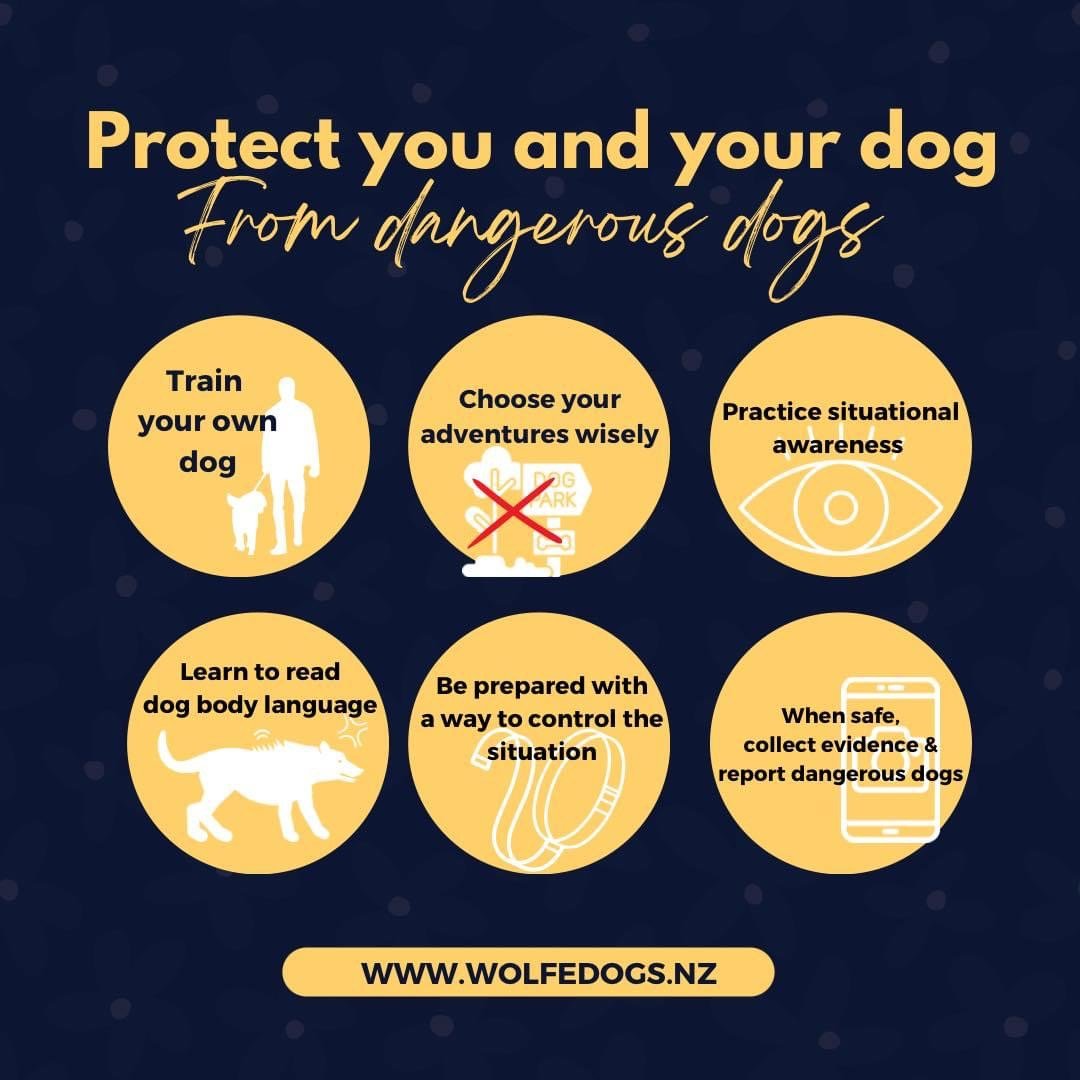Protecting you and your dog from dangerous dogs on walks
One of the leading causes of dog reactivity is having a run in with another dog out and about. While all owners should have their dogs under control at all times (whether it’s an on lead area or not!), the reality is that they often don’t so it really pays to do a little thinking about how you will keep yourself and your dog safe out and about.
✅ Train your own dog.
If you have full control of your dog, you are going to have a much better chance of keeping them safe out and about than if they’re already at the end of the leash eying up the other dog & game for a fight. This includes being able to walk reasonably well at heel when asked, and having a solid recall off distractions before being allowed off lead to avoid unwanted interactions. This also includes not saying hi to every dog, especially on lead where the added frustration of the restriction can cause issues.
✅ Choose your adventures wisely!
If you live in an area prone to wandering or out of control dogs, get in your car and walk your dog elsewhere. If there’s a local dog park that turns into a mosh pit, stay out of there (fenced dog parks are a magnet for dogs with no control at the best of times). It’s a pain in the ass, people should have their dogs under control and it’s not your fault they’re not, but if we can improve our chances of enjoying walks with our dogs for the long term then it’s worth a little extra effort.
✅ Be aware of your surroundings and proactive where possible.
We don’t want to be tense and on edge (which passes on to our dogs leading them to become hyper vigilant), but we do want to be keeping an eye on what’s going on and who is in the vicinity so we can respond in a reasonable time frame if needed - whether that’s to create space from a potential issue up ahead (asking owners to control their dogs or us heading a different direction), or to actively respond to something coming towards you. This means eyes off your phone, and paying attention to what’s going on. Those few seconds can allow a situation to escalate a lot more than it needs to.
✅ Learn a little bit of dog body language.
Mostly, a wagging tail and running up to you doesn’t mean friendly! We generally want to be seeing loose wiggly body language, relaxed faces and some chance for give and take in the interactions. Tense bodies, tight faces, flat fast running, general pushiness from either party? Take that as your cue to intervene ASAP and get your dog the hell out of dodge.
✅ Be prepared with a way to intervene if needed.
In the ideal world, we could give another dog some space and not engage or make eye contact and they’d leave us alone. But if that’s not the case and either dog is an active threat then I am prepared with an extra slip lead so I can wrangle an approaching dog and hold it at arms length if needed to give it back to the owners, choke a dog off a bite if needed or even swing it like a lasso to create a visual deterrent and barrier to a threatening dog. My own dogs are taught to stick behind me, so I can calmly step between them and an oncoming dog to create space and send the other dog away by whatever means necessary (yes, if a dog runs at me and another dog I will bloody well kick them if needed - preferably with some decent boots on!). Other less direct options include carrying an umbrella (easy to scare off another dog or use as a barrier), pet corrector (pressurised air in a can, though do make sure you desensitise your own dog to this stuff where possible), or generally making yourself appear confident, large and not worth messing with.
✅ Once safe, have a way to document the dog/person/vehicle so you can report it to animal control and prevent other people having the same experience - eg a phone with a decent camera in a handy spot to grab once the situation is under control.

